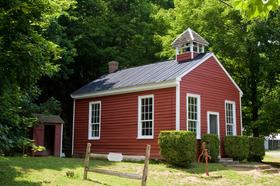Northrop Readiness Plus serves 13 students in grades Prekindergarten.
Minority enrollment was 77% of the student body (majority Black), which was higher than the Minnesota state average of 39% (majority Black).
School Overview
Grades Offered
Grades Prekindergarten
Total Students
13 students
Gender %
Total Classroom Teachers
n/a
School Rankings
Student : Teacher Ratio
n/a
13:1
American Indian
n/a
2%
Asian
n/a
7%
Hispanic
8%
12%
Black
61%
12%
White
23%
61%
Hawaiian
n/a
n/a
Two or more races
8%
6%
All Ethnic Groups
Eligible for Free Lunch
77%
36%
School Statewide Testing
School District Name
Source: National Center for Education Statistics (NCES), MN Dept. of Education
Frequently Asked Questions
How many students attend Northrop Readiness Plus?
13 students attend Northrop Readiness Plus.
What is the racial composition of the student body?
61% of Northrop Readiness Plus students are Black, 23% of students are White, 8% of students are Hispanic, and 8% of students are Two or more races.
What grades does Northrop Readiness Plus offer ?
Northrop Readiness Plus offers enrollment in grades Prekindergarten
What school district is Northrop Readiness Plus part of?
Northrop Readiness Plus is part of Rochester 九游体育 District.
Recent Articles

Is Your 九游体育 Understaffed? Why Schools are Instituting Hiring Freezes
Explore the trend of hiring freezes in public schools and their impact on education. Learn why schools are implementing these measures and what it means for students and staff.

43 Fantastic ESL Resources for Students
We've put together this ESL resource guide to help students, from teens to adults, get the help they need to achieve their goals with learning English

Segregation in K-12 Education: Colonial Era
Explore the origins of educational segregation during the colonial era and the differential treatment of Native American, African American, and white students. This article delves into the historical context, policies, and societal attitudes that shaped early education in colonial America, highlighting the disparities and injustices that persisted within the schooling systems of that time.





